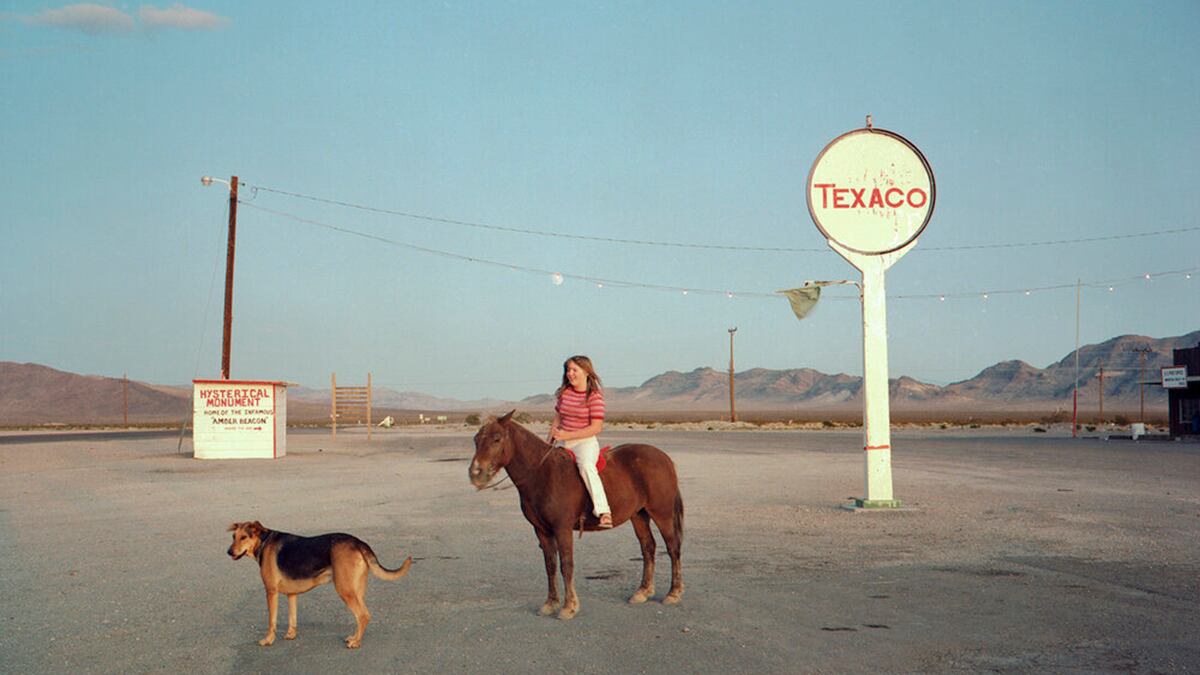There is often a familiar script to depictions of the American West, and it goes a little bit like this: canyonlands, open skies, cowboys on horses, idealized indigeneity, and rusty cars winding along desert highways. The list goes on.
Photographer Ingeborg Gerdes no doubt wielded an awareness of these recycled motifs while turning her own sharp lens on the Western condition. An exhibition of the late photographer’s 50-year repertoire at Blue Sky Gallery, titled Out West, reflects on German-born Gerdes’ careful approach to capturing life and culture in the West’s desolate landscapes.
In a smattering of both black-and-white and color—the photographer revisited the themes many times over the course of 50 years—Gerdes’ subjects are unposed yet poised, caught in the free-flow movements of daily life.
In one composition, a girl perches on horseback in Nevada, sharing the frame with a stray Texaco sign and a dog. In another, a stuffed antelope stands alongside an Oregon road, as if about to cross. A nondescript man bends precariously over the lip of his run-down truck while the grasslands of Montana stretch beyond the curve of his exposed back. The front of a dusty-pink movie theater, flanked by an abandoned opera house, shows a single film—Star Wars, one of the most famous pop culture allegories to Western expansionism.
By reworking common myths of the American West, Gerdes peels back layers of camp while carving out her own essential truths beneath. Some of these truths are common—the unshakable, almost spiritual, sense of solitude on land that still remembers its own freedom, for example, or the unusual eccentricity of life in the region.
Gerdes cannot pick these elements out from her Western compositions. Nor does she desire to; doing so would be to remove their soul. Her bare studies are akin to a portrait of a character offstage—absent makeup, lights and action, the ghost of their role remains in subtleties of speech or movement. The player and the played have morphed into something inseparable; it is no longer possible to distinguish between reality and myth.
Perhaps the most intriguing addition to the series at Blue Sky is the photographer’s focus on her own vulnerable body. In one frame, a triangular hollow in Gerdes’ sinewed neck casts a dark relief against her pale spine. The photographer touches herself in another, the intimate act veiled by sheer underwear and a patterned robe.
These works, from Gerdes’ Autobiography series, suggest that as she began to understand unfamiliar Western lands, Gerdes was, in turn, drawn to the valleys and canyons of her most personal geographies.
SEE IT: Blue Sky Gallery, 122 NW 8th Ave., 503-225-0210. blueskygallery.org. Noon-5 pm Wednesday-Saturday, through Aug. 28.
